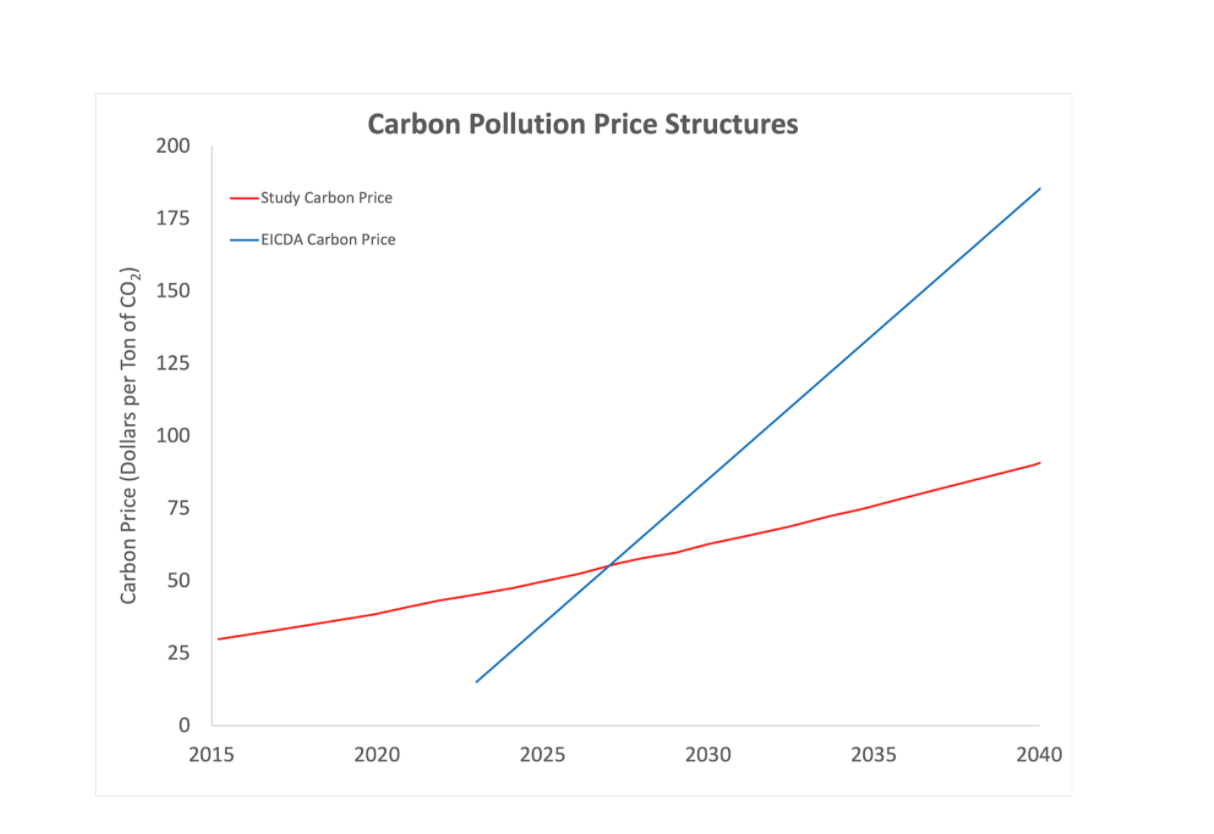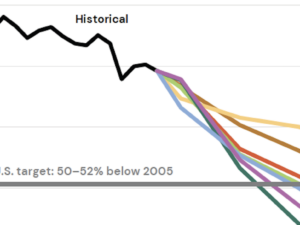New research: carbon fee and dividend would reduce poverty and inequality while strengthening the economy
By Dana Nuccitelli
On November 29, the prominent journal Nature Climate Change published two studies very relevant to CCL’s efforts. The title of the first paper nicely summarizes its key findings: Climate action with revenue recycling has benefits for poverty, inequality and well-being.
Carbon fee and dividend alleviates poverty and income inequality
The study considered a revenue-neutral carbon fee and dividend structure consistent with achieving the Paris agreement target of limiting global warming to less than 2°C hotter than pre-industrial temperatures. The carbon pricing structure in the paper is similar to that in the Energy Innovation and Carbon Dividend Act (EICDA), with a few distinctions:
- starts at an earlier date (2015)
- starts at a higher-level ($30 per ton of carbon dioxide pollution compared to the $15 starting point in EICDA)
- rises more slowly (about 5% or $2 per year in the near-term, compared to the $10 per year increase in the EICDA)
As we know from the 2020 CCL Household Impact Study, the vast majority of low-income households benefit from receiving a net income as a result of a carbon fee and dividend policy that returns all of the revenue to households in equal increments per person. That’s because low-income households have smaller carbon footprints, and so the dividend is larger than their increase in energy and other product costs.
The new Nature Climate Change paper confirmed that finding and went further to assess how much poverty and inequality would be reduced as a result. The authors used their Nested Inequalities Climate Economy (NICE) model, which incorporates regional economic distribution data into the climate-economics integrated assessment model for which William Nordhaus won the 2018 Nobel Prize in Economics.
Like the Household Impact Study, the paper then grouped populations by income quintile from the poorest 20% to the wealthiest 20%. The authors evaluated how each income group would be impacted by the carbon price if 100% of dividends were returned equally to individuals; by a carbon price with no dividends; and in a business-as-usual scenario without a carbon price.
The study concluded that a carbon price without dividends slightly increases income inequality because, even though lower-income households spend fewer dollars on energy than higher-income households, they spend a larger proportion of their income on energy costs. However, when including the equal per capita dividend, the authors found that “climate action involves a synergy with poverty alleviation” and a reduction in income inequality. In the U.S., the study estimated that their modeled carbon fee and dividend structure would lift 1.6 million Americans out of poverty by 2030. It would have even bigger effects if implemented in China and India, as the figure below from the study illustrates. Note that the poverty line is set at different levels in different countries — around a $2 per day income in China and India compared to over $40 per day in the U.S.
The carbon fee structure in the study reaches $50 per ton in 2030, meaning that the EICDA would lift approximately 1.6 million Americans (including 500,000 children) out of poverty by its fifth year when the carbon price reaches $55 per ton. The authors also estimated that the carbon fee and dividend approach would reduce income inequality in the U.S. over the next several decades (until the dividends run out as carbon emissions fall to zero) by about 1%, as measured by the Gini index, with the poorest 20% of households getting the biggest net financial boost.
This study highlights the importance and benefits of pairing a price on carbon with dividends.
Build Back Better with a carbon price
The second study published in Nature Climate Change investigates the question: if we want to meet the aforementioned Paris agreement target, would it be better for the economy if climate policy were implemented more gradually or more aggressively in the near-term? For example, many scenarios envision that global temperatures overshoot the Paris target due to too-slow emissions cuts, but cool somewhat thereafter as humanity pulls substantial amounts of carbon out of the atmosphere with as-of-yet unproven methods and technologies.
The study compares those types of pathways with scenarios that include more aggressive climate policies and emissions cuts in the near-term so that global temperatures always stay below the Paris target. This would require that countries reduce carbon pollution even faster than their current Paris pledges (a.k.a. “Nationally Determined Contributions,” or NDCs). The U.S. NDC pledges to cut our emissions 50–52% below 2005 levels by 2030.
Using nine separate climate-economics integrated assessment models, the authors investigated how these different approaches would impact the global economy as measured by gross domestic product (GDP). They found that the climate policy investment costs would of course be larger over the next few decades in the more aggressive scenarios, but the economy would be significantly stronger in the second half of the century. The authors concluded, “accelerating the transformation towards net-zero CO2 emissions would have benefits for the long-term GDP, even without considering the benefits of avoided impacts.”
The last part of that sentence is key, because we know from research led by Drew Shindell and others that climate policies like carbon pricing yield substantial immediate benefits in the form of healthier, longer lives due to cleaner air, and long-term benefits from a stable climate lessening extreme weather disasters. This particular study did not account for those benefits, but nevertheless found that implementing more aggressive climate policies today would make the economy stronger in the long-term.
As numerous analyses have shown, while the climate policies and investments in the House-passed version of the Build Back Better budget reconciliation package are historic, they are insufficient to meet the U.S. NDC. If the Senate is able to add a carbon price and dividend to their version of the package, it could allow the U.S. to meet or even exceed our Paris pledge. As the studies discussed here concluded, this would alleviate poverty, reduce income inequality, and strengthen the economy in the long-term while allowing Americans to breathe cleaner air and live longer, healthier lives and preserving a stable climate for future generations.
Adding a carbon price to Build Back Better would be a win-win-win for the U.S. economy, Americans’ health, and the global climate.
Dana Nuccitelli is an environmental scientist and climate journalist with a Master’s Degree in physics. He has written about climate change since 2010 for Skeptical Science, for The Guardian from 2013 to 2018, and since 2018 for Yale Climate Connections. In 2015 he published the book “Climatology versus Pseudoscience”, and he has also authored ten peer-reviewed climate studies, including a 2013 paper that found a 97% consensus among peer-reviewed climate science research that humans are the primary cause of global warming.








